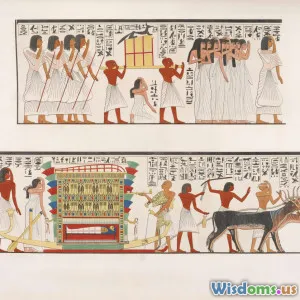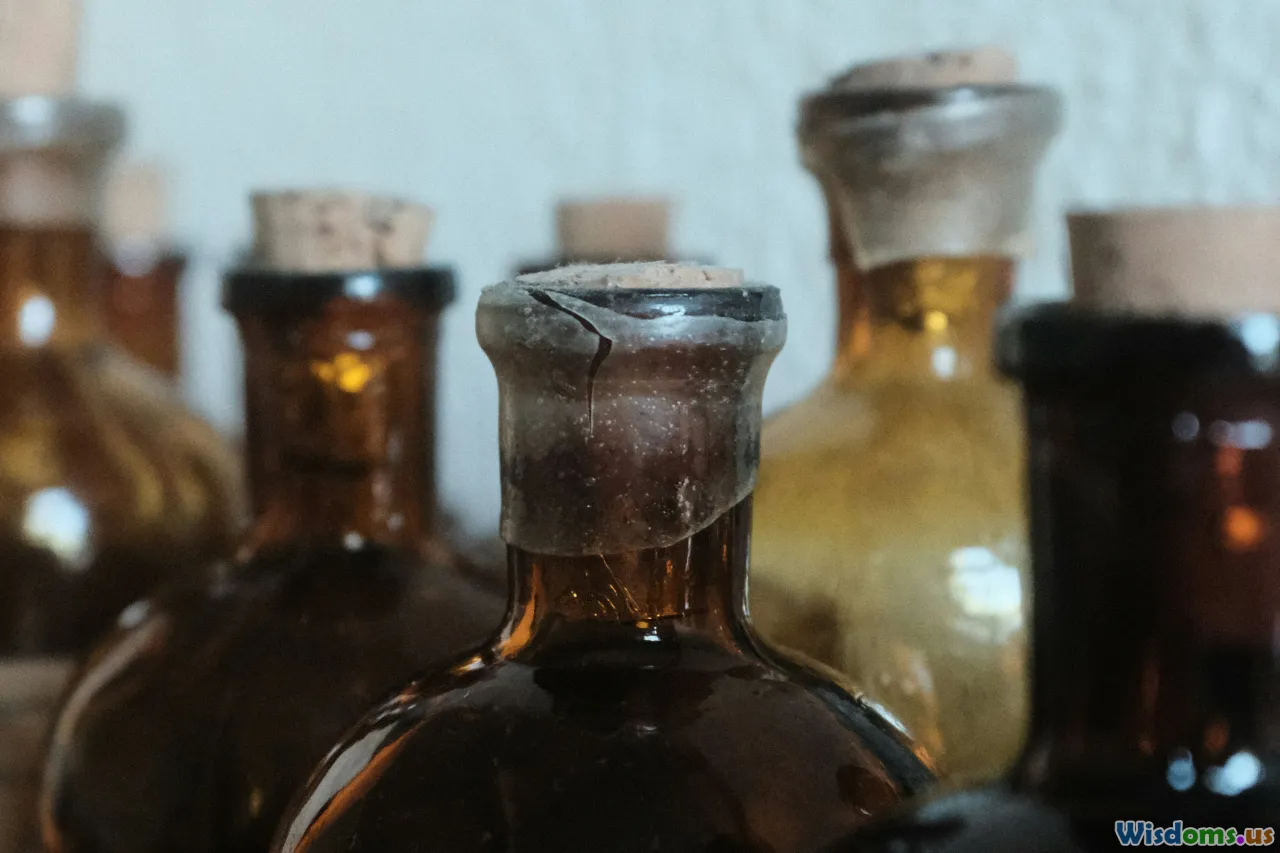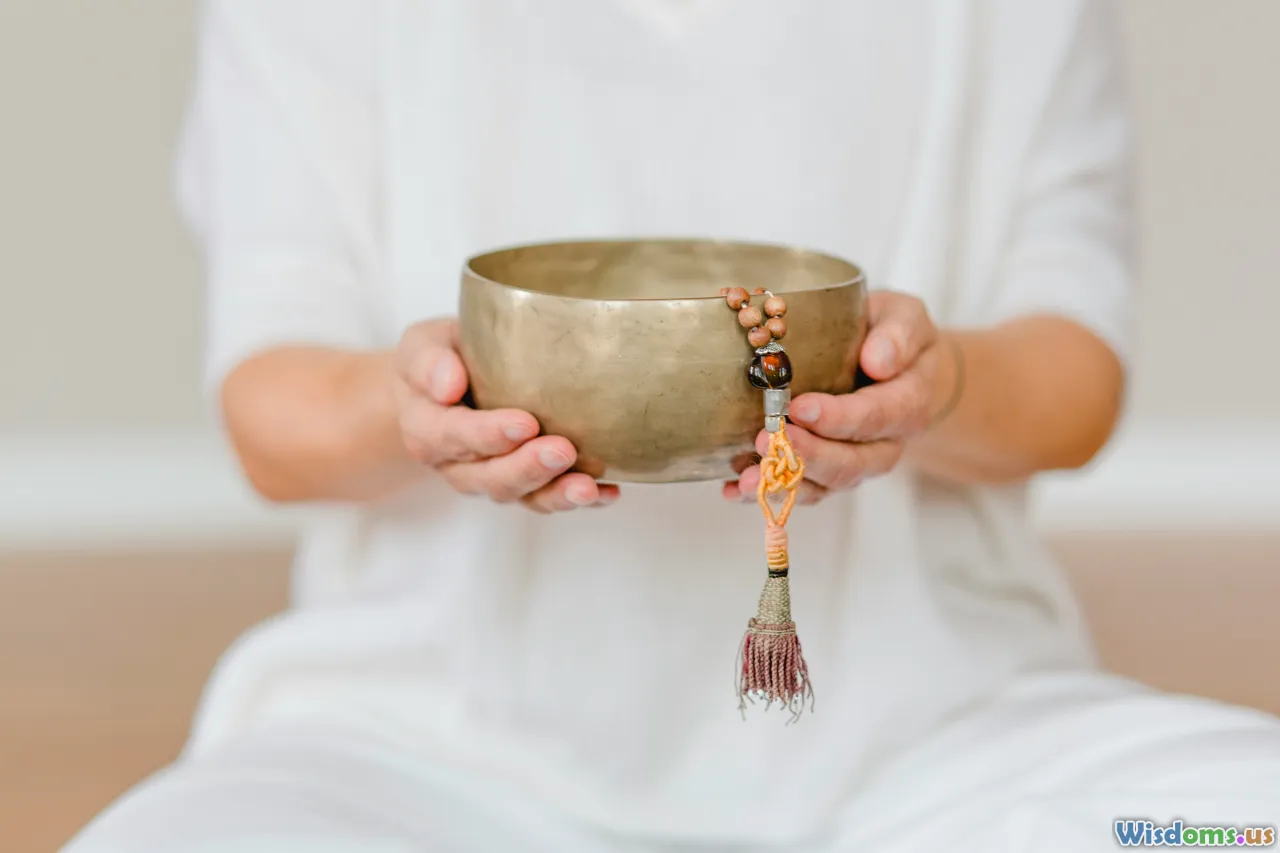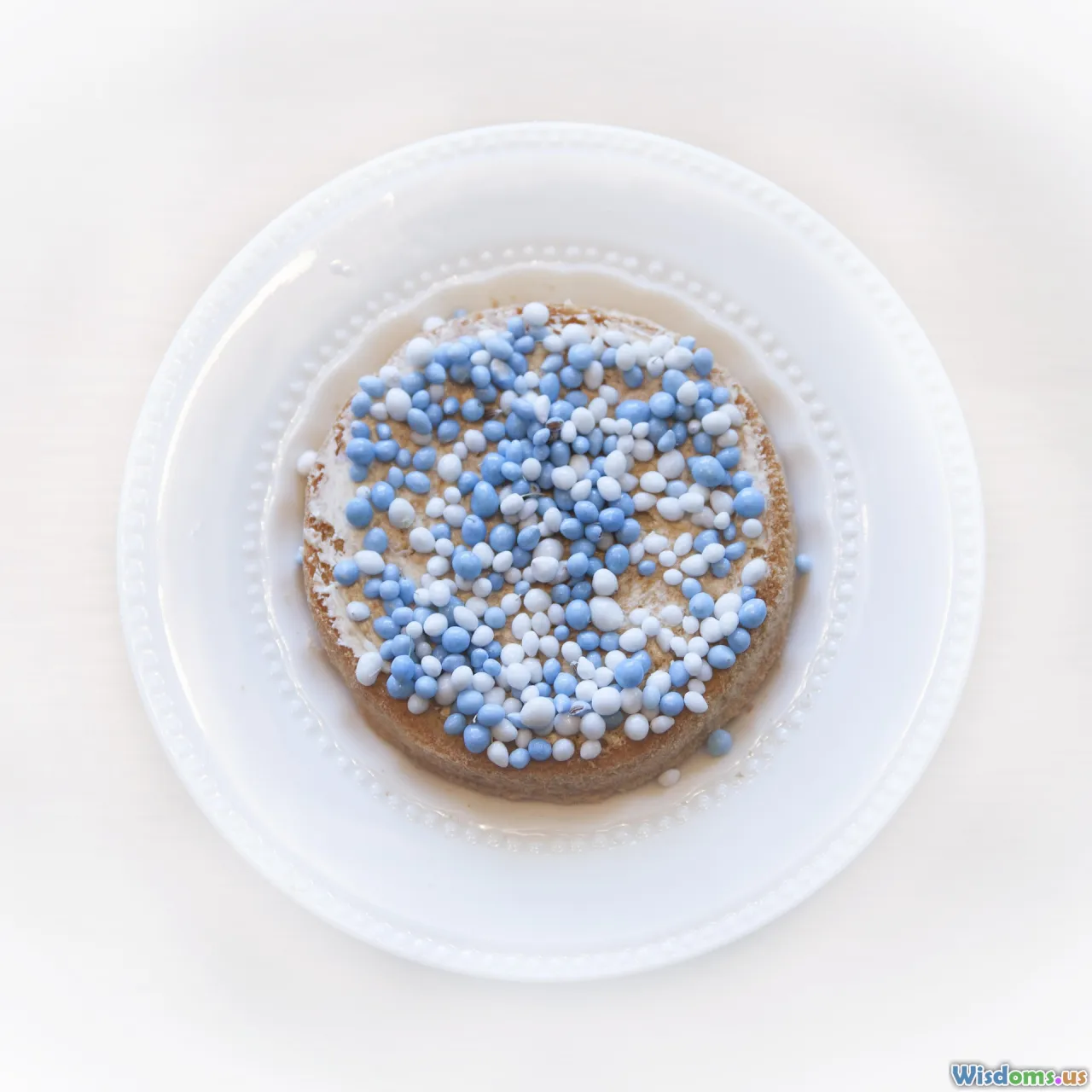
Unlocking Egypts Medical Secrets Techniques from the Ebers Papyrus
14 min read Explore ancient Egyptian healing methods revealed in the Ebers Papyrus, uncovering their innovative medical practices and lasting impact on modern medicine. (0 Reviews)
Unlocking Egypt’s Medical Secrets: Techniques from the Ebers Papyrus
Millennia before modern medicine, ancient Egyptians cultivated a sophisticated understanding of the human body and its ailments. Junior scribes, priests, and healers documented remedies and surgical insights on scrolls. One extraordinary example stands out: the Ebers Papyrus—a 110-page medicinal codex dating to around 1550 BCE, unearthed from the sands of Luxor.
Yet, how did these early physicians diagnose diseases, devise treatments, and record detailed protocols? Today we dissect the hidden wisdom of the Ebers Papyrus, unlocking ancient know-how with practical relevance and timeless intrigue.
Prescriptions from Antiquity: Unraveling the Ebers Papyrus

When Georg Ebers, a German Egyptologist, acquired a brittle papyrus in 1873, he changed the face of medical history. The Ebers Papyrus covers over 700 medical remedies and spells, including dermatology, ophthalmology, gynecology, dentistry, and even the treatment of mental disorders.[^1] Its encyclopedic structure offers rare insight into the synthesis of practical medicine and spiritual ritual during Egypt’s New Kingdom.
Key Features of the Ebers Papyrus:
- Length: Over 20 meters (about 65 feet) when unrolled
- Content: 700+ remedies and incantations
- Scope: Internal medicine, dermatology, gynecology, digestive ailments, surgery
- Material: Papyrus stalks, inked by hand
Unlike modern Western science, ancient Egyptian medicine combined rational observation with magical thinking. Practical treatments often rested side-by-side with amulets, prayers, or invocations to deities like Isis and Thoth.
Diagnosing like an Egyptian: Clinical Observations and Understanding

Before CT scans or MRI machines, how did early healers diagnose illness? The Ebers Papyrus reveals surprisingly rational clinical observation and a proto-scientific method:
- Symptom Documentation: Egyptian physicians carefully noted signs such as fevers, abnormal pulses, and swelling. For example, they described the difference between various types of coughs and associated them with specific lung diseases.
- Examination by Touch and Smell: Physicians palpated (felt) lesions and wounds, compared limb temperatures, and even sniffed bodily fluids to distinguish infection from other conditions.
- Pulse Diagnosis: Section 854 of the Ebers Papyrus details a crude version of pulse-taking, nearly two thousand years before it appeared in China or medieval Europe. Physicians assessed the strength, regularity, and rhythm—presaging later cardiovascular diagnostics.
Example:
“If you examine a man having an illness in the vessels of his head and daylight does not enter his eyes...say: It is a disease of the blood.”
Egyptian physicians understood that different symptoms pointed to distinct underlying diseases—contradicting the notion that ancient medicine was based purely on random guesswork or superstition.
Ancient Remedies: Ingredients, Recipes, and Applications

The heart of the Ebers Papyrus lies in its remedies and pharmacopoeia. Far from being esoteric, many Egyptian prescriptions draw upon surprisingly accessible ingredients—some of which modern science now recognizes for their efficacy.
A Multifaceted Materia Medica
Commonly Used Substances:
- Honey: Antibacterial and wound healing
- Frankincense and myrrh: Anti-inflammatory, antimicrobial
- Willow bark: A natural source of salicin, precursor to aspirin
- Garlic and onions: Circulatory and immunological boosters
- Laxatives: Castor oil, figs, and dates
The Ebers Papyrus classifies remedies for myriad conditions:
- Gastrointestinal complaints (constipation, indigestion): Fennel, cumin, colocynth
- Ocular diseases (eye infections, cataracts): Honey, malachite, ground minerals
- Bone and joint injuries: Animal fats and plant-based poultices
- Skin disorders: Lotus flowers, resins, and beeswax ointments
Medical Recipes in Action: Examples You Can Trace
To heal a wound:
Salve with honey, olive oil, and linen. Apply to the affected area. This blend protects against infection and expedites healing.
For persistent coughs:
Mixture of honey and ground herbs (thyme, licorice). Drink three times daily with warm beer.
Remarkably, several of these recipes meet basic criteria for antimicrobial or anti-inflammatory effectiveness, as demonstrated by recent pharmacological studies.[^2]
Surgery, Prosthetics, and Innovation: Beyond Potions and Lotions

Though usually remembered for herbal concoctions and ritual, Egyptian doctors also wielded scalpels, splints, and bandages. The Ebers Papyrus includes detailed instructions for surgical wounds, cuts, and bone fractures:
- Description of Wounds: Physicians were taught to distinguish between simple cuts, deep wounds, and festering ulcers—each with appropriate dressings.
- Basic Surgery: Some treatments involve excising (cutting away) dead tissue—often using obsidian blades.
- Bone Repair: Splints and bandages stabilized broken limbs. Lotus-fiber wrappings, plastered in egg white, formed the world’s earliest casts.
- Prosthetic Innovation: Archaeologists have discovered artificial toes, sandals, and wooden limbs—evidence of advanced anatomical knowledge and craftsmanship.
Example Surgical Procedure:
Place honey-soaked linen on a fresh wound “while uttering the healing charm.” If swelling or fever ensues, reclean and dress anew.
While far from today’s sterile operating rooms, ancient Egyptian practices marked a critical bridge from superstition towards systematic anatomical inquiry.
Disease Theory: Spirits or Science?

The Egyptians conceived illness as a complex interplay between natural and supernatural factors. The Ebers Papyrus highlights this duality:
- Natural Causes: Parasites (especially in water), dietary imbalances, physical injury—noted as the most likely roots of fever, diarrhea, and joint pain.
- Metaphysical Imbalance: Offense to the gods, evil spirits, or disruption of the body’s vital channels (shayet) could also bring sickness. Magical spells and amulets often reinforced pharmacological treatment.
How did they reconcile magic and medicine?
Incantations accompanied cleansing rituals. Prayers were invoked along with herbal ointments. For many Egyptians, effective treatment meant harmonizing the physical, spiritual, and social.
Women’s Health and Gendered Medicine

Unlike much of antiquity, ancient Egypt allowed qualified women to serve as "Swnw" (doctors), especially in gynecology and obstetrics. The Ebers Papyrus contains some of the earliest documented protocols for women’s health:
- Menstrual Disorders: Pomegranate, honey, and figs to address irregular cycles.
- Fertility Issues: Vaginal suppositories made from dates, acacia, and honey as fertility aids or contraceptives. Modern studies suggest saponin compounds in acacia disrupt sperm motility,[^3] hinting at scientific prescience.
- Pregnancy Testing: The infamous wheat and barley test instructed women to urinate on seeds; differential sprouting predicted pregnancy or even the baby’s sex—a method partially validated by contemporary experiments.[^4]
- Childbirth Challenges: Cooling ointments and massage for obstetric pain, soothed by invocation of Isis, protector of mothers.
Midwives and female doctors preserved women’s autonomy and expertise—an enviable distinction among ancient civilizations.
Herbal Wisdom’s Modern Echoes: What Still Works Today?

Many Ebers Papyrus ingredients have persisted in folk medicine and are now supported by laboratory studies.
- Honey: Recognized today for its broad-spectrum antibacterial properties. Medical-grade honey is used to treat burns and chronic wounds.
- Willow Bark: Contains salicin, the evolutionary precursor of aspirin—prompting pain relief and reducing inflammation.
- Garlic: Modern clinical trials validate garlic’s benefits in lowering cholesterol and blood pressure.
- Aloe Vera: Egyptians applied it for burns and skin irritations; a staple in today’s natural beauty products.
According to a 2013 study in the Journal of Ethnopharmacology, over one-third of the botanicals cited in ancient Egyptian texts show measurable medicinal efficacy.[^5] This intersection of tradition and evidence emphasizes continuity and the selective wisdom encoded in these records.
Lessons for Modern Practitioners

What insights can today’s physicians, herbalists, and researchers glean from this 3,500-year-old document?
Holism and Individualized Care
Ancient Egyptian physicians addressed not just symptoms, but also the context and character of each patient—prescribing lifestyle changes, dietary restrictions, and emotional remedies.
Herbal Verification and Drug Discovery
A renewed appreciation for time-tested herbal formulas could drive bioprospecting—the search for new drugs in ancient remedies. For example, studying traditional combinations ("synergy") often yields more effective, less toxic therapies.
Integrative Therapies and Ritual
Modern healing increasingly recognizes the value of supportive ritual, patient belief, and psychosomatic connection—echoing Egypt’s insistence that prayers could comfort where herbs could not.
How to Explore Ancient Medical Wisdom Today

Curious to engage deeper with the Ebers Papyrus and Egypt’s medical legacy? Here’s how:
- Visit Museums: The original Ebers Papyrus resides at the University of Leipzig, Germany. High-quality replicas and annotated translations can be found at the British Museum or the Egyptian Museum in Cairo.
- Read Translations: Edwin Smith and Ebers Papyrus English translations unveil elaborate case studies—perfect for modern practitioners or history enthusiasts.
- Hands-on Learning: Many academic centers and herbalism institutes offer workshops on reconstructing ancient remedies (using safe ingredients). Consult with professionals before experimenting.
- Online Courses: Platforms like Coursera or edX frequently feature lectures on ancient Egyptian medicine, bioarchaeology, and papyrology.
Enduring Fascination: From "Magic and Spells" to Evidence and Science
The Ebers Papyrus is more than an archaic medical treatise—it is a testimony to curiosity, dedication, and the relentless pursuit of healing. By blending natural observation with spiritual conviction, ancient Egyptian doctors achieved advances that resonate to this day.
In our era of digital diagnostics and molecular medicine, these fragile scrolls remind us to balance deep analysis with empathy, ingenuity, and awe for the mysteries still unsolved within the human body.
[^1]: Nunn, J.F. (1996). Ancient Egyptian Medicine. University of Oklahoma Press. [^2]: Serpico, M. and White, R. (2000). "Resins, amber, and bitumen." In Ancient Egyptian Materials and Technology. [^3]: Friedman, M., & Weimer, R. D. (1982). "Saponin content in acacia species." Phytochemistry, 21(11), 2649-2653. [^4]: Barani, A., et al. (2016). "The ancient Egypt pregnancy test: A study." African Journal of Reproductive Health. [^5]: Aboelsoud, N. H. (2010). "Herbal medicine in ancient Egypt." Journal of Medicinal Plants Research, 4(2), 082-086.
Rate the Post
User Reviews
Popular Posts
















